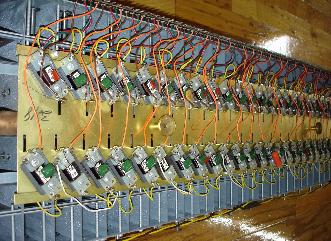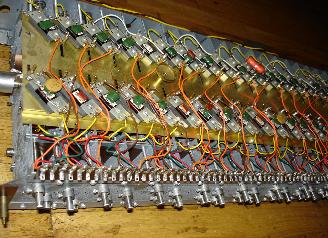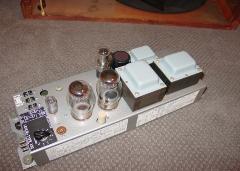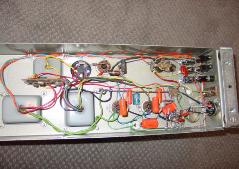SERVICE
We service organs in the Tri-State area of New York, Connecticut, and New Jersey. Occasionally,
we will also service areas of western Pennsylvania. Call to make an appointment. Service calls
are generally $110.00. For this fee, everything is checked out and repaired in this first hour of
labor. If additional work is necessary, labor rates are $70.00 per hour. These rates do not include
parts.
Emergency services with less than 24 hours notice are available at an extra cost. Call for a quote.
LESLIE AMP REBUILDING:
While some technicians simply do a
"cut-and-paste" job of replacing the
capacitors and some resistors, we
remove all components from the amp
chassis. It is then painted and new
labels are applied. All resistors,
capacitors, pots and tube sockets are
replaced. In addition, we rebuild the
amp using a common ground buss
layout developed by Bob Schleicher
that reduces noise and increases
reliability.
HAMMOND PREAMP REBUILDING:
As a special service, we can
completely rebuild your Hammond
AO-28 or AO-10 preamp. In this
process we remove all components
from the amp chassis. All resistors
and capacitors are replaced with high
tolerance ones. Our amps are then
bench-tested for proper stage gain,
frequency response, and feedback
calibration. As a final step, our amps
are tested in an organ to verify that all
tonal nuances are correct.

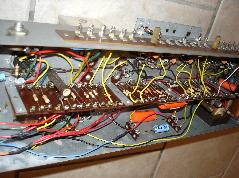
TONE GENERATOR RECAPPING/RECALIBRATING:
As Hammond organs have aged, most components have fared
well. One vital part of these magnificent organs that does often
need replacing is the tone filtering. Tones 49 through 91 have
special MATCHED coils and capacitors known as LC Networks.
Each tone frequency has a coil and capacitor that has a
matched frequency response that resonates with the frequency
of their particular tone wheel. The result is a filtering out of all
extraneous and unwanted frequencies, leaving just the desired
pure tone. Although the coils in these LC networks are stable,
the capacitors have over the years drifted from their original
tolerance, and thus changed the frequency response of the LC
network. The result is usually poor generator output, especially
of the high frequencies, and a generally muted dull sound from
the organ.
It is very important that the coils be matched very closely with
the correct capacitance. We do this by feeding the frequency
through the LC network, and varying the capacitance slightly
above and below the nominal value until we achieve the
maximum output, thus indicating a correct frequency match.
This process is repeated for all filtered tones.
Once the LC networks are optimized, the tone generator still
needs to be calibrated. We have done extensive research,
measuring the output curve of the best sounding organs we
have come across, and by comparison have come up with an
optimized calibration curve. The tone generator is then
matched to this curve.
